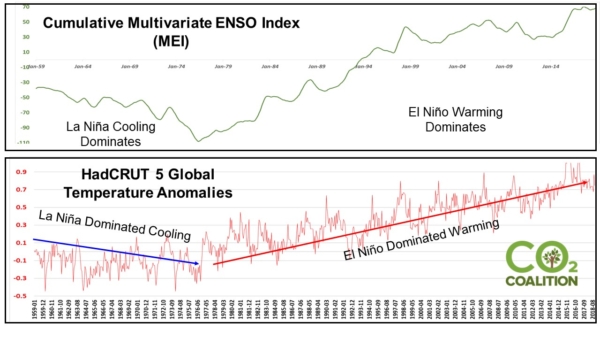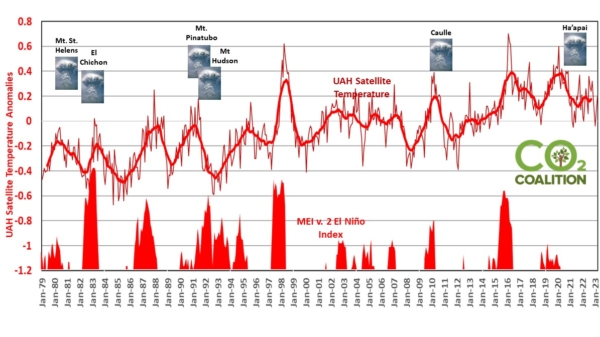The Heat You’re Feeling Could Just Be El Nino
Executive Director Gregory Wrightstone quoted in Epoch Times:
Analysts say pattern of warming and cooling suggests CO2 emissions not the culprit
From Epoch Times‘ Kevin Stocklin
If temperatures hit unseasonable highs this fall and winter don’t blame fossil fuels, blame El Nino, a group of climate analysts say.
Flying in the face of the prevailing narrative on climate change, a recent report on the Pacific Ocean weather phenomenon known as El Nino argues that this weather phenomenon corresponds more closely to shifting temperature patterns and is the more likely cause of temperature changes than CO2 emissions.
…
“While it doesn’t influence a large part of the world, it does seem to have significant influence on temperature,” Greg Wrightstone, geologist and executive director of the CO2 Coalition, said.
Analyzing temperatures versus El Nino activity and atmospheric CO2 levels shows that “while CO2 continues to increase at a pretty steady rate, [temperature] spikes don’t seem to be driven at all by CO2-driven warming,” Wrightstone said. “Virtually all of these El Nino events drive global temperature spikes,” typically with a lag of several months.
“The only exception, interestingly, is 1991 to 1995,” he said. “We had a strong El Nino, and it looks like it was cancelled out the with eruption of Mount Pinatubo and Mount Hudson, which have a cooling effect.”
The correlation of El Nino events (shown at bottom) and global temperature spikes (shown at top).
(Courtesy of Greg Wrightstone)
“We had a number of strong El Nino events in the last 20 to 30 years, in particular the 1998 and the 2015–2016 El Nino,” Watts said. “Both of those events caused a dramatic warming of the Pacific, and that warming gradually spread out across the globe.
“But when we were in a La Nina pattern, since 2015, temperatures dropped significantly and globally,” he said. “And so that does not correlate with CO2 being the main driver of temperature. We would not see a global cooling from 2015 to present.”
“We were in a cooling trend from the mid 40s until the late 70s, all while CO2 levels increased,” Wrightstone said. “That period from the late 40s to the late 70s was La Nina-dominated cooling. And then just as we started getting into an El Nino-driven period, we went into this warming term period from the late 1970s until today.”

Temperature trends during periods when La Nina dominates, versus when El Nino dominates.
(Courtesy of Greg Wrightstone)
The complete Epoch Times article, originally published June 23, 2023, can be accessed here. Please note that this article is paywalled.

